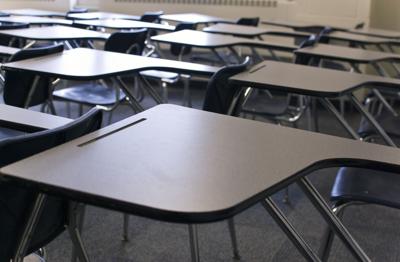A majority of Ontario’s education workers have experienced violence on the job.
That’s according to a recent University of Ottawa report, based on a survey of nearly 5,800 education workers, including teachers, direct student support staff, and indirect staff such as custodians, clerical workers, and bus drivers.
The study reveals widespread workplace violence and harassment ŌĆö issues compounded by discouraging responses from administration. The report says these incidents contribute to toxic environments and harm the physical and mental health of education workers, as well as their ability to do their jobs.
If unaddressed, the retention crisis in education “is going to be so much worse,” said Darby Mallory, a PhD student in criminology and lead author of the report, which was funded by the Social Sciences and Humanities Research Council of Canada.
Most of the violence and harassment was student-initiated, with 67 per cent of respondents reporting at least one act of physical force and 77 per cent experiencing harassment ŌĆö including profanity, cruel comments, false accusations, sexual and racial harassment, homophobia, demeaning ŌĆ£jokes,ŌĆØ and general disrespect for authority.
The report also highlights abuse from parents. Forty-seven per cent of respondents said they experienced at least one instance of harassment from a parent, while 13 per cent reported being threatened with physical force by a parent.
The ETFO conducted its 2023 All-Member Violence Survey in February and March and shared the
The researchers say the rise in violence is a symptom of “insufficient funding,” at a time when demand for student supports is increasing.
The report cites statistics showing that, when adjusted for inflation, per-student funding has declined provincially. As a result, it says schools face larger class sizes with students who have complex needs, too few educational assistants, limited material resources, reduced access to professional services, and delayed assessments and interventions.
Respondents described constant disruptions, exhaustion, increased substance use after work, heightened stress and anxiety, and a diminished sense of enjoyment due to their work environment.┬ĀSome said they had begun “quiet quitting” ŌĆö stepping back from volunteering or after-school activities ŌĆö or were taking leaves of absence.
“All of the vandalism, the aggressive and rude students, the walking on eggshells, and the constant screaming and crying of young dysregulated kids in the hallways. It’s all unsettling, uncomfortable and leaves me feeling hopeless,” one elementary teacher said.
More than half of respondents agreed they would leave the education sector if they could get an equally well-paying job elsewhere.
Despite the frequency of violence and harassment, many incidents go unreported. While 72 per cent of respondents said they had experienced one or more incidents that could have been formally reported but weren’t, 38 per cent said they didnŌĆÖt report any, and 14 per cent rarely or never even reported informally to a supervisor.
Teachers and students report a significant jump in classroom incivility since returning to class
The report includes a description from an early childhood educator who was pulled over the back of a chair by a childŌĆÖs hair, dislocating two ribs and damaging neck muscles. The respondent said they were reprimanded by administration for putting themselves in that position, and were told that it would’ve hurt less if their shoulder length hair had been in a ponytail. “Not once was I supported,” they said.
“This isn’t just about student violence; it’s about how we’re responding to the violence, to harassment, that shapes our ability to talk about these issues,” said Mallory.
“If people are not reporting because they fear reprisals or because they’re being blamed, then that skews the information schools have access to,” she said. “There is a serious issue of under-reporting.”































To join the conversation set a first and last name in your user profile.
Sign in or register for free to join the Conversation